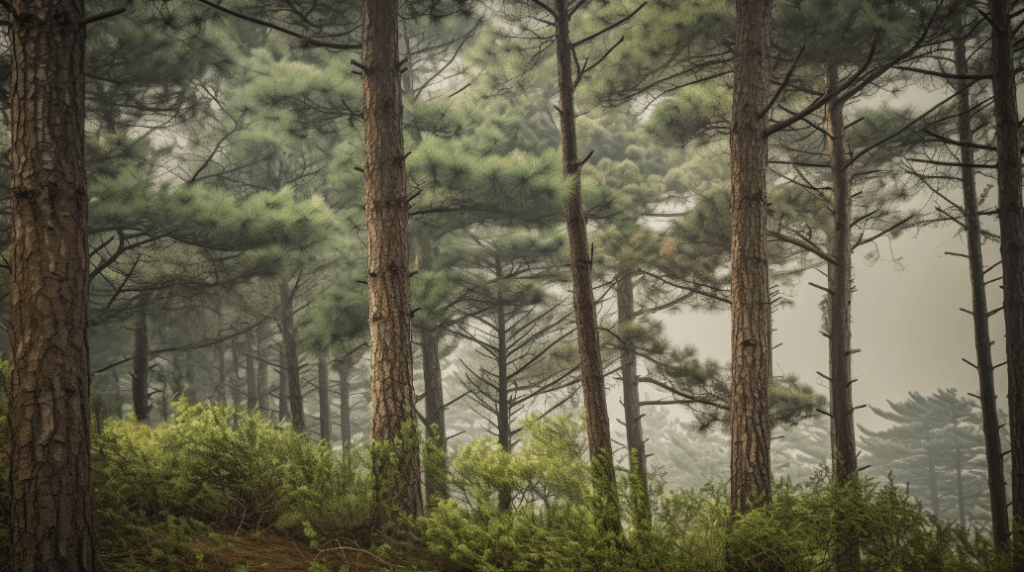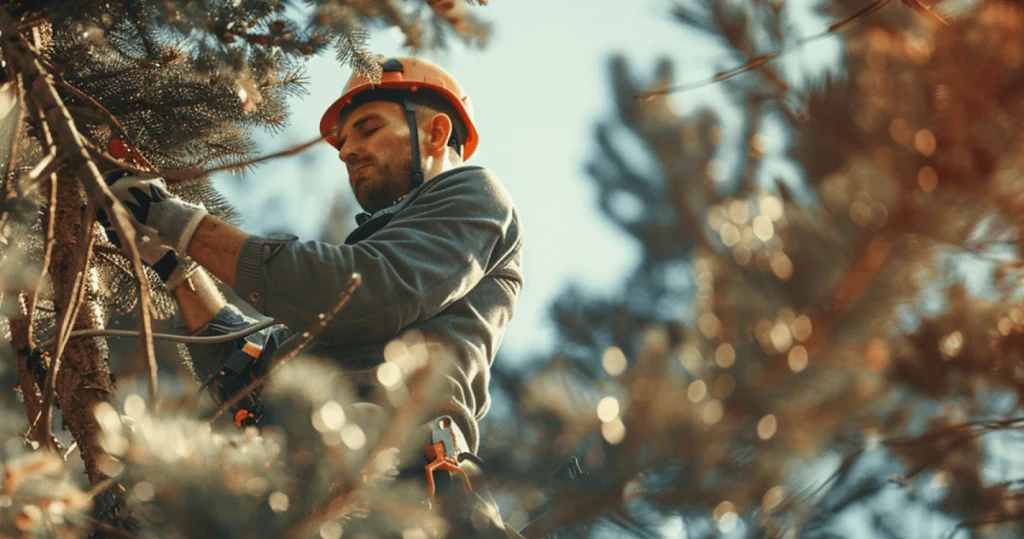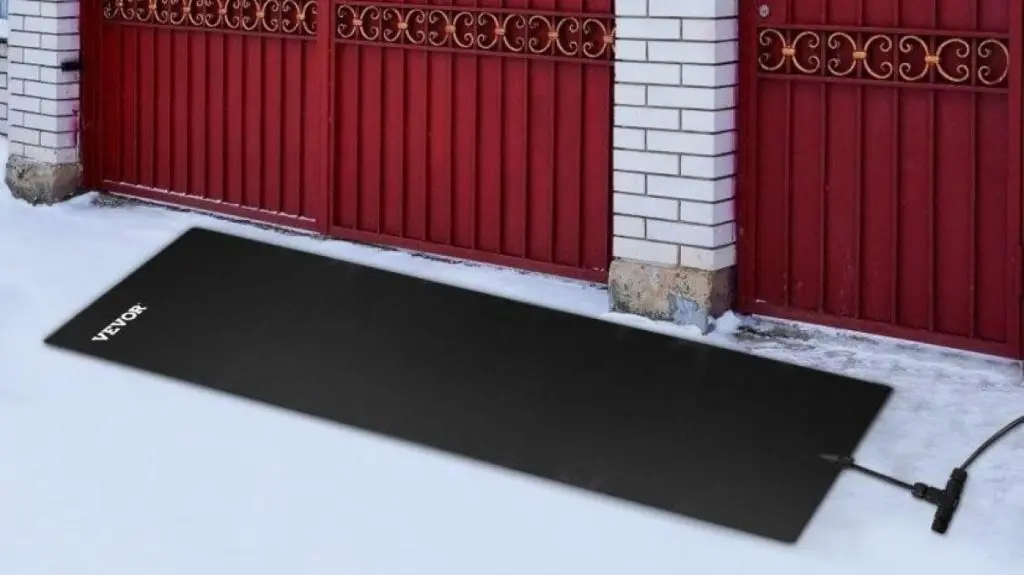Pine trees stand as majestic guardians of our landscapes, providing shade, beauty, and even protection from harsh winds. However, like any living organism, they require care and attention to thrive. Regular pruning is vital to pine tree maintenance, promoting healthier growth, enhanced aesthetics, and safeguarding against diseases.
This comprehensive guide delves into the intricacies of trimming pine trees, focusing on the optimal timing for this essential task. Moreover, we introduce the VEVOR tree pruner as a versatile solution, simplifying the pruning process for gardeners of all skill levels.
Table of contents
- Understanding Pine Trees and Their Needs
- When to Trim Pine Trees: Timing is Everything
- When to Prune Pine Trees: Identifying the Right Time
- Can You Prune Pine Trees in the Summer?
- How to Trim Pine Trees Safely and Effectively
- Aftercare: Ensuring a Healthy Recovery
- Common Mistakes to Avoid When Trimming Pine Trees
- VEVOR Tree Pruner
- FAQ about Pruning Pine Trees
Understanding Pine Trees and Their Needs
The Lifecycle of a Pine Tree
Ever take a minute to observe a pine tree’s growth? It’s fascinating! From its start as a tiny seedling to its tall, mature state, each step in a pine tree’s life needs different care. Knowing what your tree needs at each phase makes a difference in helping it thrive.
- Seedlings: These are like the babies of the pine tree world. They’re super delicate and need lots of gentle love. You also have to protect them from too much sun and wind.
- Saplings: Once pine trees hit this teenage phase, they have more strength and stretch upwards. They’ll still need plenty of TLC, especially since they’re not quite strong enough to fight off all pests or diseases on their own yet.
- Juvenile: This is like the young adult stage for pines. They’re more robust and hearty, but this is prime time to start shaping them up with careful snips.
- Mature Trees: The granddaddies of the pine world! By now, they’re pretty much set in their ways, but that doesn’t mean you can forget about them—they still need check-ups and the occasional trim to stay healthy.
Why Trimming is Essential for Pine Trees
Pruning a pine tree isn’t just for looks, though they look pretty handsome after a good trim. There are some real benefits to giving your pine tree a regular haircut:
Sunlight and Airflow
Like us, trees need space. Thinning out some branches allows more air and sun to pass through, helping the tree breathe easily and soak up those rays.
Removing Bad Branches
If you have damaged or sick branches, it’s like having a bad tooth—you must get it sorted before it affects the rest of the tree.
Keeping Them Strong
A good pruning session helps the tree maintain its shape and stand straight without becoming wonky and crooked.
Pests Be Gone
Overcrowded branches can be an open invite for pesky bugs looking for a home, so keeping things trim helps send them packing.
Just remember, while it might seem daunting, learning the ropes of pine tree care can pay off—figuratively and literally if you’re growing them for timber! And who doesn’t enjoy being the parent of a happy, healthy, hundred-year-old tree?
When to Trim Pine Trees: Timing is Everything

Figuring out the perfect time to trim the pine trees in your backyard is essential for keeping them happy and growing strong. For example, we feel refreshed after a good haircut, and pine trees need a snip-snip at the right time to stay healthy.
Best Seasons for Pruning Pine Trees
Here’s the lowdown on when to bust out those pruning shears:
- Late Winter to Early Spring: This is like the pine tree’s chill time. They’re not focused on growing much, so they bounce back quickly if you prune them now. Plus, giving them a trim just as they wake up for the year prepares them to sprout some fresh, new needles.
- Late Summer to Early Fall: Have you ever seen a pine tree sag under the weight of snow or snap after an ice storm? It’s not pretty. Trimming pine trees before they get their winter coats means you can shape them up and help them stand up to whatever Jack Frost throws their way.
Just remember, these trees are taking it easy during these times – either having a winter nap or getting ready for a colder season – so it’s like choosing the best time to go jogging without breaking too much sweat.
Pruning isn’t just about making your pines look good; it’s about keeping them fit. Just like we don’t want unnecessary stress, neither do they. And hey, helping them heal faster from a good prune means they’ll look spiffy just in time for the warm or cold seasons. Please keep it simple and bright, and your pines will thank you!
When to Prune Pine Trees: Identifying the Right Time
To determine the best time for pruning pine trees, it’s essential to consider the tree’s growth cycle and local climate conditions. Here’s a month-by-month guide to help identify the optimal pruning times:

- January to February: Ideal for winter pruning when the tree is dormant.
- March to April: Early spring pruning encourages new growth.
- May to June: Avoid pruning during active growth to minimize stress on the tree.
- July to August: Late summer pruning helps shape the tree before winter.
- September to October: Another opportunity for late-season pruning before winter dormancy.
- November to December: It is best to avoid pruning as winter approaches to prevent frost damage.
By aligning pruning efforts with the tree’s natural growth cycle and local climate patterns, gardeners can maximize the benefits of pruning while minimizing stress on the tree.
Can You Prune Pine Trees in the Summer?
Do you want to give your pine trees a summer trim? You indeed can, but it’s a teeny bit dicey. Here, I’ll walk you through what’s cool about summer pruning and what’s not.
Pros
First, the upside of cutting back those branches when it’s hot out:
- Healing Hustle: Believe it or not, your pines are like superheroes in the summer—they heal uber-fast thanks to all that sticky sap flowing like a river.
- Seeing Clearly: With all the green glitz in full swing, spotting the awkward limbs that break the tree’s mojo is a cinch. A snip here and there can neaten things up.
- Instant Makeover: Chop in the summer, and voila! You can immediately tell if you’ve turned your pine tree from shabby to chic.
Cons
Now, for the not-so-great part:
- Feeling the Heat: Picture yourself in a sauna, and now imagine working out there—your pine thinks that stress level when pruned in the summer heat.
- Sunburn Alert: Yep, trees get it too! Fresh cuts might as well have a bullseye for those harsh sun rays, potentially turning the exposed bits into tree toast.
- Bugs Galore: It’s like ringing a dinner bell for insects. They’re all over pruning wounds faster than you can say “bug off,” raising the risk that your tree might get bugged more than you’d like.
Chopping and changing during the warm months is doable. Just make sure you don’t go all Edward Scissorhands on it. A little tender loving care goes a long way. Keep your tree cool, shielded, and as chill as possible, and you’ll keep it smiling through summer.
How to Trim Pine Trees Safely and Effectively
There’s something so satisfying about keeping your pine trees pruned just right. They don’t just look good; they feel good like they can breathe better, you know? But getting there means doing the trim with some know-how to avoid hurting the tree or, heaven forbid yourself.
Preparing to Prune: What You Need to Know
Before we get snippy with the branches, you must gear up and get the 411 on what you’ll be dealing with. Safety first, folks!
- Safety Gear: Have you ever had a pine branch fall on your head? No? Let’s keep it that way. Suit up with gloves, goggles, and a hard hat.
- Pruning Tools: A trusty pair of shears or a fancy-schmancy VEVOR tree pruner (more on that later) will make the job a lot cleaner and more accessible.
- Tree Check-Up: Give that tree a good once-over for any iffy bits like damage or sickness, and scout out for power lines that could make for a shocking situation.
- Check the Sky: If it’s starting to look like a scene from ‘Twister,’ save the pruning for another day.
- VEVOR Tree Pruner Prep: If you plan to go pro with the VEVOR, get cozy with the manual and ensure all the bits and bobs are assembled correctly.
Step-by-Step Guide to Trimming Pine Trees
Have you got everything sorted? Sweet. It’s time to turn your tree from shaggy to chic.
- The Bad Branch Breakup: Spot those gnarly branches that are dead, damaged, or looking a little sickly. They’ve got to go for the tree’s sake and yours.
- Keep the Peace: Branches are getting too cozy with each other (think crossing and rubbing) and need some personal space. Snip away to bring the zen back.
- Snip, Snip: Don’t just hack willy-nilly. Aim for the tree’s equivalent of a healing scab outside the branch collar.
- Bottoms Up: Tackle the lower branches first and work your way up like a tree barber, finding the perfect fade.
- Artistic Retreat: Take a step back occasionally to squint at your work. Is it looking good? Balanced? Fab.
Aftercare: Ensuring a Healthy Recovery
You’ve done the hard part. It’s all about the tree R&R (rest and recovery, get it?).
- Water Works: Give your tree a long, cool drink of water to ease the post-prune shock.
- Mulch Magic: Sprinkle some mulch at the base for that spa-like moisture and temperature control.
- Pest Watch: Are there critters or weird spots showing up? Check those cuts for any unwelcome guests.
- Wound Wardrobe: Got some major cutbacks? Seal them up nicely and cozy with dressing or sealant to keep the germs out.
- Be Patient: Like a good hairdo, it needs time to grow back in style. No over-pruning, especially when Mother Nature’s already throwing a hissy fit.
And there you have it! With these steps, your pine trees should be happy, healthy, and high fashion. Remember, it’s not about being perfect; it’s about caring for your green buddies and keeping them – and you – safe.
Common Mistakes to Avoid When Trimming Pine Trees
A lousy hairdo can make you want to wear a hat for weeks, but messing up a trim can rough your pines. Here are some things you want to dodge, and I’ll even throw in some down-to-earth advice on how to do it right, especially with the help of a nifty tool like the VEVOR tree pruner.
Watch Your Cuts
Imagine just hacking away and leaving ugly stubs or snipping too close to the trunk—ouch! These tree no-nos can stop your pine from healing and invite many tree troubles. Now, the VEVOR tree pruner is like the tree doctor’s scalpel—super sharp and precise. Aim for that sweet spot outside the branch collar for a cut that’s not too close or far but just right and keeps your tree happy and healthy.
Take it Easy
Going overboard and cutting off more than you should is like over-plucking your eyebrows—there’s not much left to work with. Trees feel that, too. Thin them out too much, and they might weaken and lose their charm. Be a minimalist; use the VEVOR to target those dead or awkwardly crossing branches and leave the rest be. It’s all about preserving the tree’s strength and good looks.
Safety First
Now, climbing trees takes me back to being a kid, but as an adult, you’ve got to think about safety. No one wants a trip to the ER because they forgot their gear or used a dull pruner. Make sure you dress for the occasion with safety gear, and give the VEVOR a quick check to ensure it’s sharp and ready for action. You’ll thank yourself later.
Timing is Everything
Would you mow your lawn in a snowstorm? I hope not! Pruning is no different. Doing it while the tree’s trying to grow or when the weather’s acting wild can stress it out big time. A little tip: a peek at a pruning calendar (plenty online) and pick the best time to trim your pines. That VEVOR will wait patiently until it’s gone.
VEVOR Tree Pruner
Ready to show your pine trees some love without all the hassle? Meet the VEVOR Tree Pruner – it’s like having an extra hand in the garden. From your first cut to the finishing touch, this pruner is designed to make your life easier and keep your trees happy and healthy.

Spending time in your garden should be fun, not a chore, right? Well, that’s where the VEVOR Tree Pruner comes into play. It’s been crafted with you, the passionate gardener, in mind. Whether you enjoy spending weekends perfecting your backyard oasis or you’re in charge of keeping the neighborhood’s trees in tip-top shape, this pruner is going to be your go-to tool.
Features and Benefits of the VEVOR Tree Pruner
Alright, here’s the scoop on what makes the VEVOR Tree Pruner so great:
- Precision Cutting: Prepare for clean cuts that would make a barber jealous. Your trees will heal fast and grow healthy, and thank you for it.
- Extendable Reach: Who needs a ladder when your pruner can stretch out like a yoga pro? Safe, easy, and no balancing act required!
- Ergonomic Design: Comfort? Check. Easy to handle? Double-check. This pruner is all about making your gardening more about enjoyment and less about aching arms.
- Versatility: Whether you’re cleaning up dead branches, shaping the tree, or getting it ready for its next big growth spurt, this pruner can handle it.
Why Choose VEVOR for Your Pine Tree Care?
Don’t just take our word for it—gardeners and pros are all about the VEVOR Tree Pruner. Home gardeners love the boost in their green-thumbed pursuits, finding this pruner helpful and an actual garden game-changer. Pro arborists? They’re reaching for it time and time again for its dependable snips and long-term durability.
FAQ about Pruning Pine Trees
Can I prune pine trees in the summer?
Sure, it’s possible, but it’s like getting a haircut in the dog days of summer – sometimes it’s best to wait. If you do prune, go easy and pick a more relaxed moment.
How do I know which branches to prune?
Aim for the dead or troubled branches first—think of it as tree triage. If two branches are fighting for space, give them room to breathe.
What tools do I need for pruning pine trees?
Keep it simple: a trusty pruner like the VEVOR, gloves to keep those hands looking nice, and safety goggles – because eyes are essential.
How do I prevent disease after pruning?
Neat cuts are your best friend here. Imagine you’re a surgeon, and treat each cut with respect. If left with a more significant wound, consider a pruning sealant to keep the bugs and nasties away.
Can I prune pine trees to reduce their size?
Little snips here and there won’t hurt, but it might be better to call in the experts if you’re thinking of something more radical. After all, every tree deserves the best care we can give it.
Wrapping It Up
Just like picking the right moment for your favorite cup of tea, timing your pruning can make all the difference for your pines. They’ve been around for eons, and with a bit of TLC and the right tools—like the VEVOR Tree Pruner—you can help them stay in their majestic glory for many more years.





